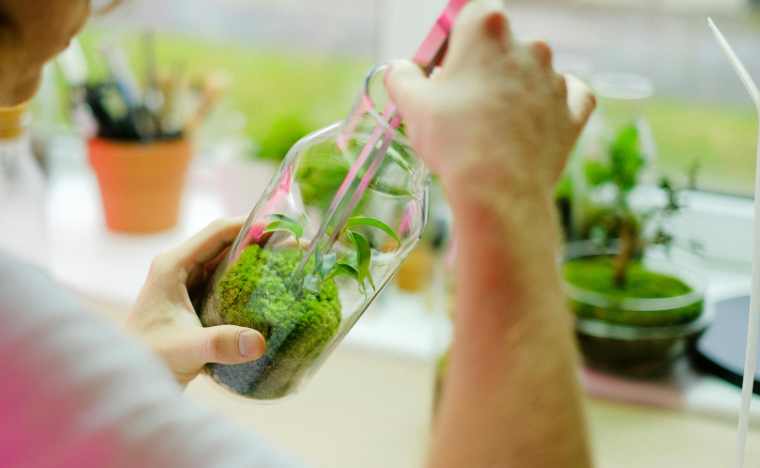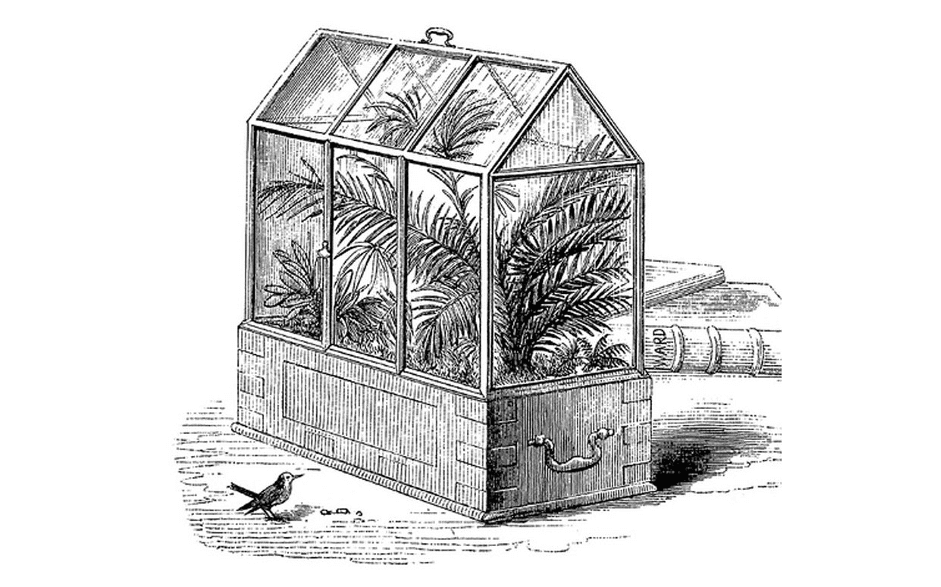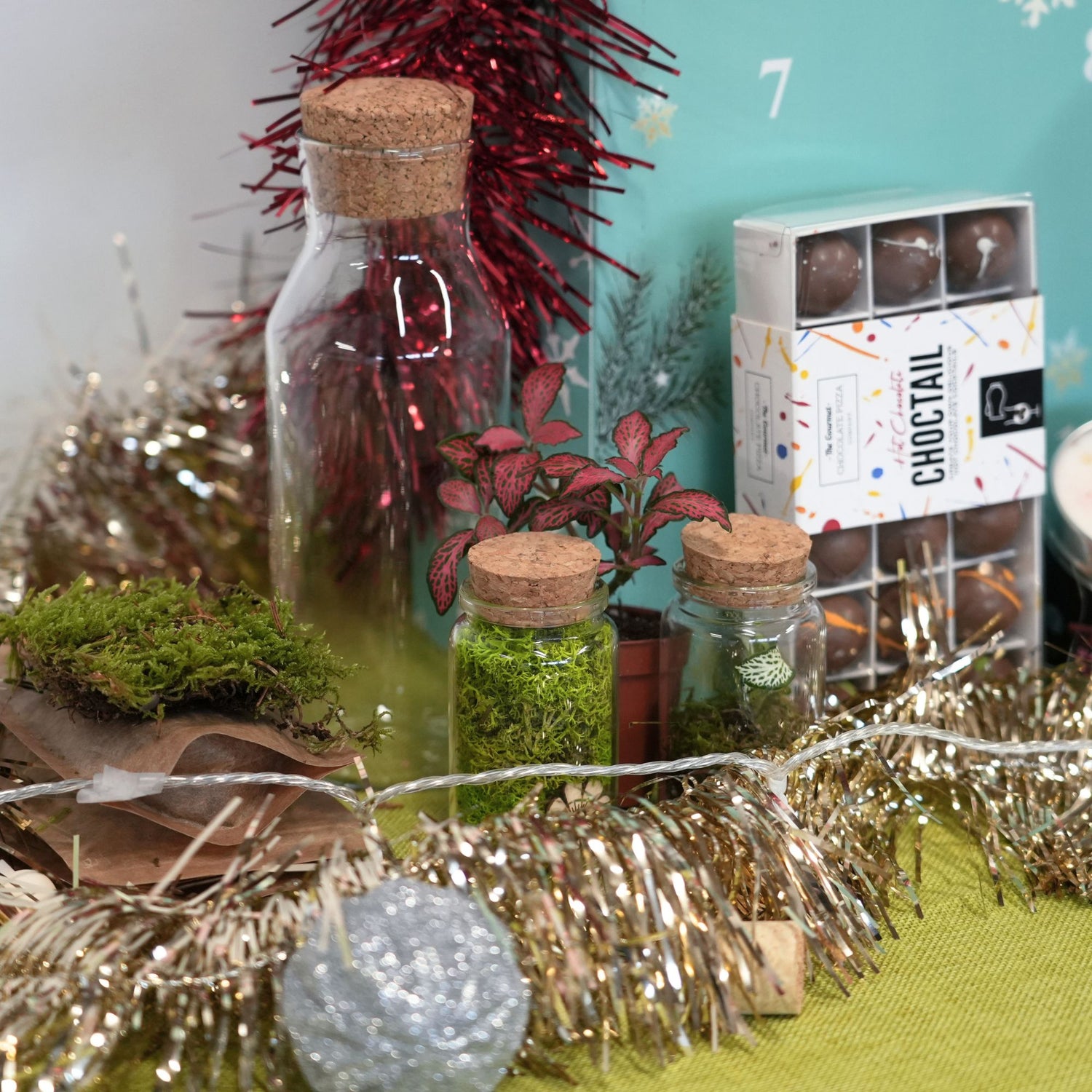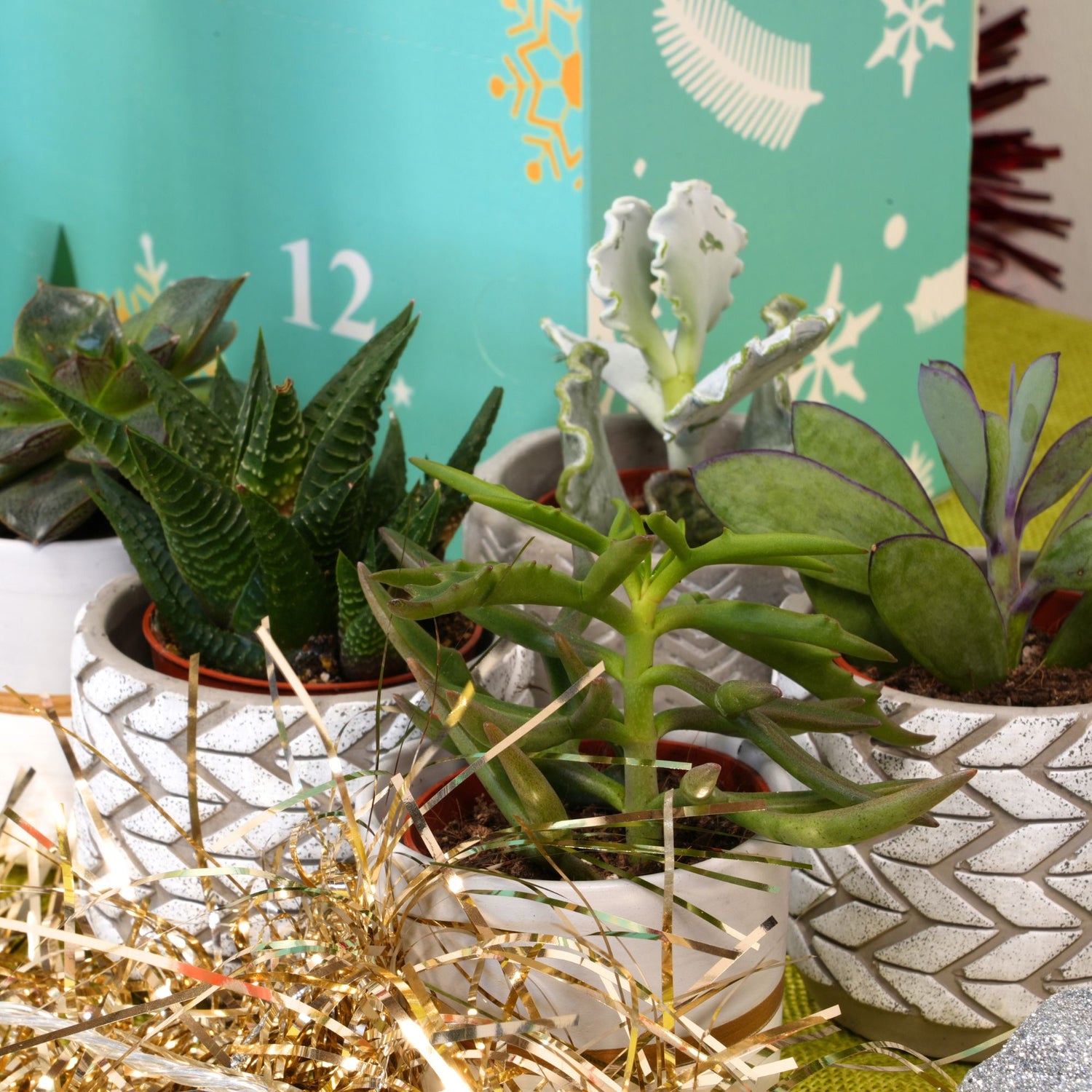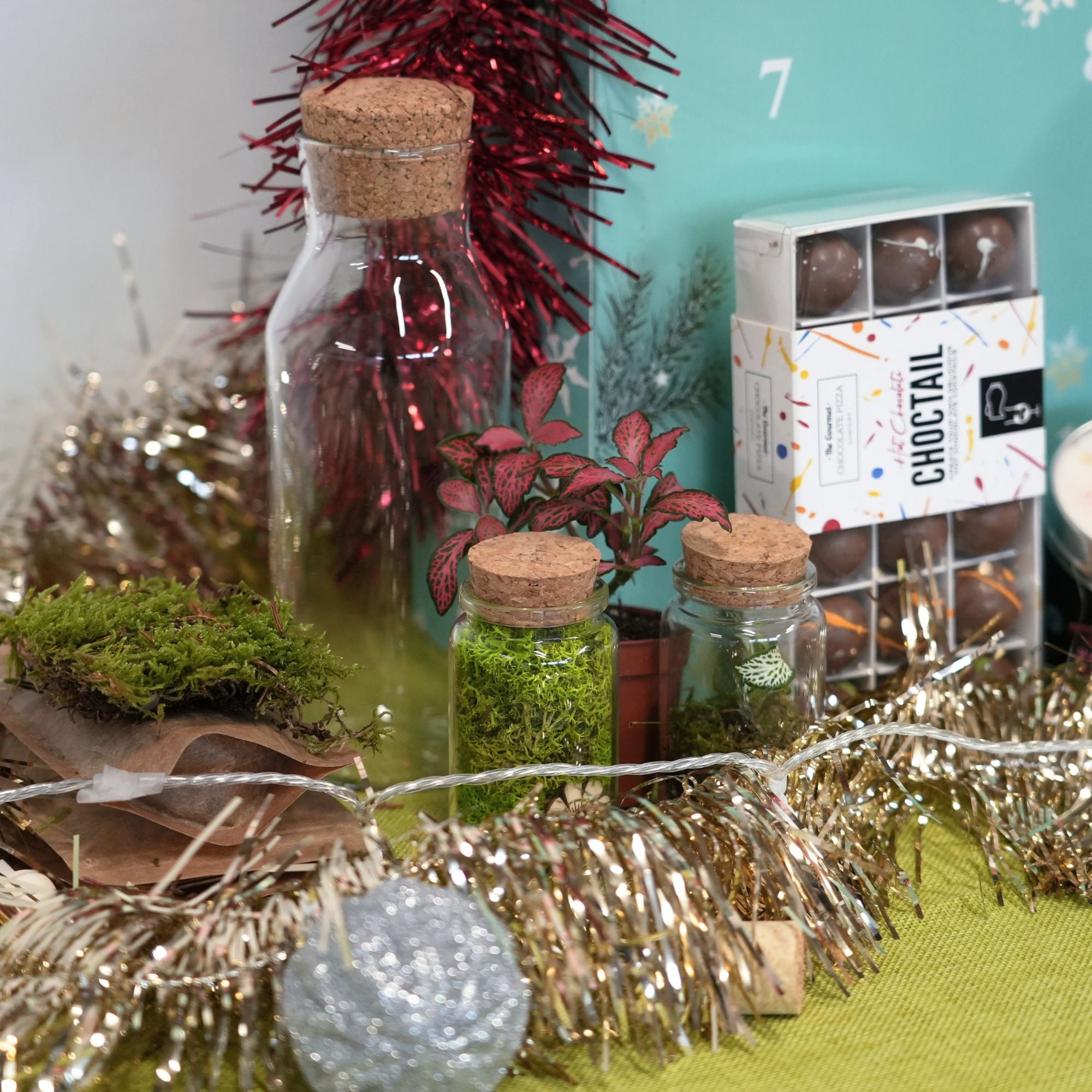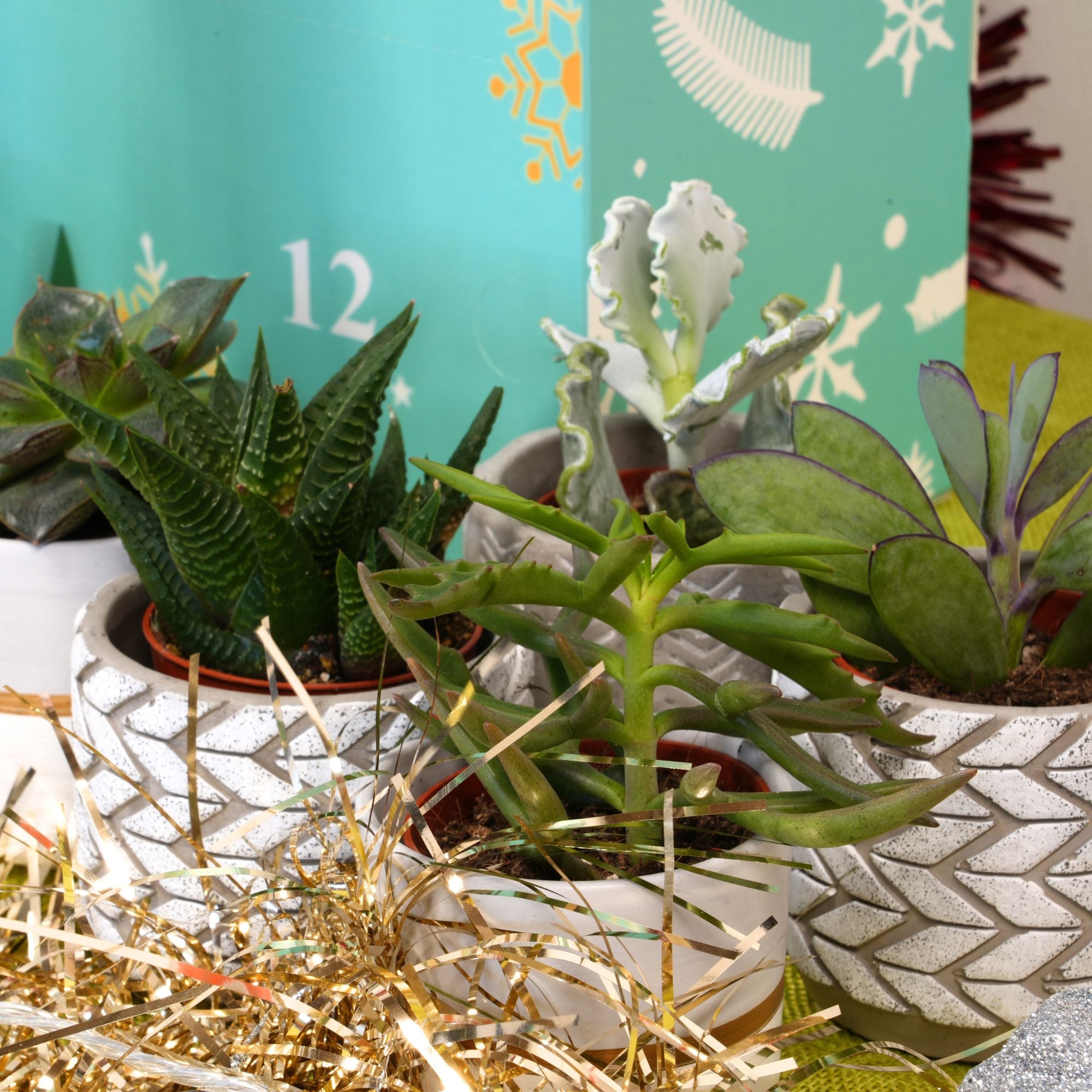Terrariums are mess free and easy to care for, having a little landscape for you to create a home for house plants is both calming and therapeutic. Terrariums look perfect on a desk or coffee table and make excellent gifts. But how to do properly look after your terrarium?
How To Look After a Terrarium?
Terrariums are fairly low maintenance and the plants growing inside them will largely look after themselves, however there are some things you can do to give your terrarium the best life. Closed jars will create their own ecosystem and even become self-watering. Where you keep your terrarium is crucial for the plant survival, so it is worth paying attention to the light requirements of each plant before planting them together. Humidity can also be an issue, with some plants requiring dry environments and other needing constant humidity.
Where To Position a Terrarium?
For closed terrariums, you want to place these away from windows or a spot with a bright, indirect light as most problems come from too much light or heat. For an open terrarium, you want to place these on a windowsill or table in full or partial sun. If your succulents become tall and straggly, they will need more light.
How To Water a Terrarium?
With open terrariums, water succulents and cacti can be watered weekly from March to October with a teaspoon of water per plant. During winter you will only water every six weeks. With closed terrariums, you should be able to see condensation build up to a third of the height of the jar. If you can, you don’t need to do anything – the terrarium will maintain an even level of humidity and even become self-watering. If the condensation Is higher than a third of the jar, then remove the lid and carefully wipe away the excess water with some kitchen roll on some long tweezers. If there is very little condensation, then ass a tablespoon of water.
If you are looking at getting a terrarium, whether that be as a gift or a lovely decoration to brighten up your desk. Have a look at our beautiful range of terrariums and ecosystems.



